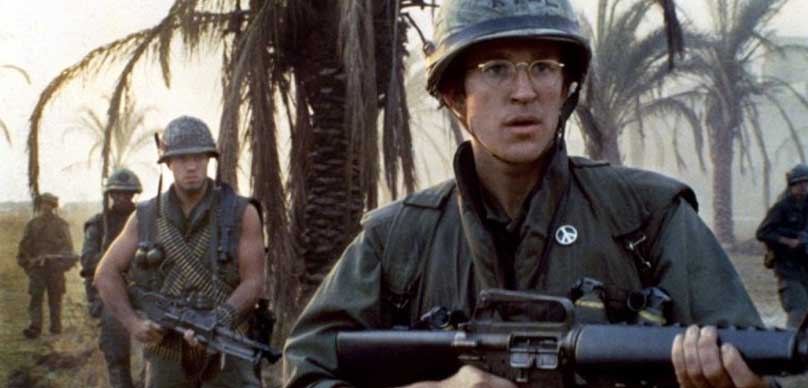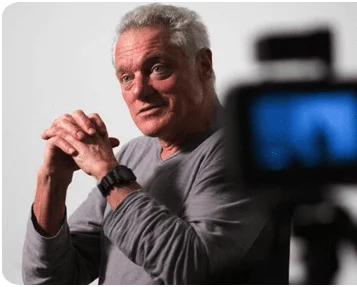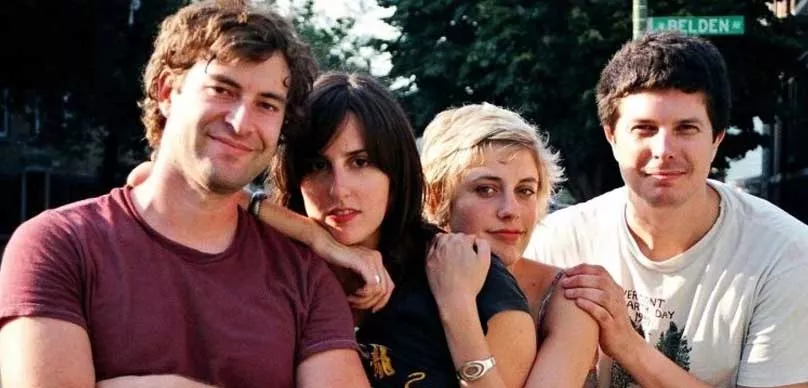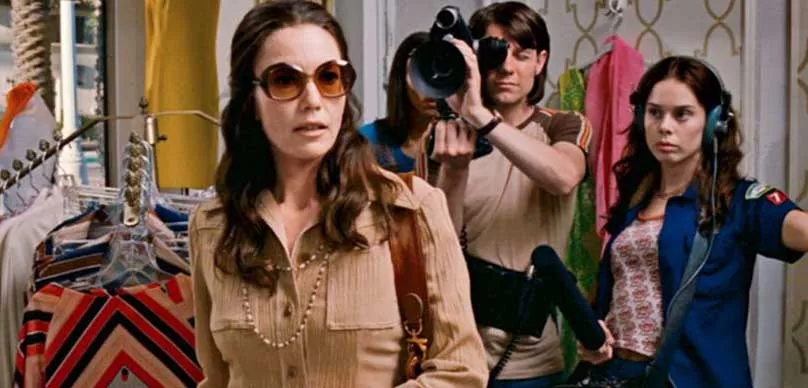Right-click here to download the MP3
What is that elevates a filmmaker to a film master like Stanley Kubrick, or that elegant French word, auteur? In the vast majority of films that make it onto the big screen these days, it is the actors’ names which draw curious audiences above the director’s.
In many cases, at least in a film’s public profile, the director works behind the scenes, barely participating in the promotion circuit, and in the most disheartening cases, can even earn the label of a “Hollywood Hack”.
There may be hundreds of such ill-fated directors circulating, however, the last 120 years of filmmaking have given us a precious selection of truly masterful auteurs. From Alfred Hitchcock to Jean Renoir, from Claire Denis to Quentin Tarantino, the film masters’ canon is a rich one.
Such filmmakers leave an indelible mark on their films; they exert unmistakable control over their project; they allow their creative idiosyncrasies to seep into every aspect of their process. In other words, cinematic masters have the freedom to make their films truly their own, and the vision to create something unique in doing so.
Inarguably one of the most creative, idiosyncratic, visionary directors of our time, Stanley Kubrick falls easily into this categorisation of auteur. His films, which frequently mix incisive political messages with disturbing character relationships and iconic horror imagery, are simultaneously artful and raw.
In perhaps his best-known film, The Shining, his uncanny, labyrinthine and geometric framing of the film’s hotel setting transform inanimate objects like tricycles and corridors into pseudo-characters in themselves, capable of conveying horror and unease even without explicit violence.
In his Vietnam War indictment Full Metal Jacket, Kubrick blurs the line between military brutality and full-blown abuse, masculinity and femininity, violence and sexuality, in ways no other filmmaker could. Indeed, his characteristic blending of beauty and ugliness, politics and psychology, composure and unease, have marked Kubrick’s cinema even since his earliest projects, such as
Below is by far one of the best video essays on Stanley Kubrick’s work. THE DIRECTORS SERIES is an educational non-profit collection of video and text essays by filmmaker Cameron Beyl exploring the works of contemporary and classic film directors. You can donate to support the project at:
Patreon: patreon.com/directorsseries. Before you watch the videos check out these legendary letters from the man himself Stanley Kubrick.
You can also see his settler work breaking down on of Stanley Kubrick’s most intense pupils, David Fincher. Enjoy!
Download the mp3 of the podcast here
Stanley Kubrick’s First Indie Film “Fear and Desire”
We all start somewhere and the 1953 feature film Fear and Desire is where the legendary Stanley Kubrick got his. Fear and Desire is a 60 minute independent film, written, financed, shot and directed by a 25-year-old Stanley Kubrick, who had just quit his job full-time job as a photographer at LOOK Magazine.
The film’s budget was estimated to be $10,000, a hell of a lot in the 1950s. The production was made up of 15 people: Kubrick, five actors (Paul Mazursky, Frank Silvera, Kenneth Harp, Steve Coit, and Virginia Leith), five crew people (including Stanley’s first wife, Toba Metz) and four Mexican laborers who lugged the heavy film equipment around San Gabriel Mountains, where the film was shot. Kubrick said in an interview with Paul Mazursky interview with Paul Mazursky
“There was no dolly track, just a baby carriage to move the camera.”
Kubrick hated this film with a passion and unsuccessfully attempted to destroy every copy of the film in existence. Before a restored version of the film was played at the 1993 Telluride Film Festival Kubrick publicly said that is was:
“a bumbling amateur film exercise.”
After watching it I understand why he didn’t want anyone to see it. It’s a bit amateur and the acting and story are not what you would expect from a Kubrick film but it’s a fascinating look at his first attempt at filmmaking. Enjoy.
Includes a five-minute interview with the director about the film.

The Barry Lyndon Projectionist’s Letter
Stanley Kubrick was legendary for making sure his films were projects perfectly in every theater around the US. Below you’ll find an amazing letter that was sent out to all projectionists screening Barry Lyndon.
It was reproduced by screenwriter and film critic Jay Cocks, who explained:
“I knew Stanley pretty well for a while, but at the time of the Time Barry Lyndon cover I was in LA beginning preliminary work on Gangs of New York. So I had no hand in the Time cover, but still managed to let Stanley know how great I thought the movie was. He replied with his usual gracious, funny note and enclosed this letter, because he thought I’d be interested. Bet you will be too.”
Thank you Mr. Cocks. Check out the letter below:

A rep from Warner Brothers responded to the letter,
“We stand firmly that we are 100% in compliance with Mr. Kubrick’s wishes and edict” and that “the letter from Kubrick to projectionists was the reference for our 1.78 aspect ratio call.”
God I miss you Stanley.
1.1- STANLEY KUBRICK- EARLY INDEPENDENT FEATURES
Part 1 of the DIRECTORS SERIES’ examination into the films and career of director Stanley Kubrick, covering his early independent feature films:
–FEAR & DESIRE (1953)
–KILLER’S KISS (1955)
–THE KILLING (1956)
1.2- STANLEY KUBRICK- THE KIRK DOUGLAS YEARS
Part 2 of the DIRECTORS SERIES’ examination into the films and career of director Stanley Kubrick, covering his features in collaboration with actor Kirk Douglas:
–PATHS OF GLORY (1957)
–SPARTACUS (1960)
1.3- STANLEY KUBRICK- THE PETER SELLERS COMEDIES
Part 3 of the DIRECTORS SERIES’ examination into the films and career of director Stanley Kubrick, covering his features in collaboration with actor Peter Sellers:
–LOLITA (1962)
–DR. STRANGELOVE: OR HOW I LEARNED TO STOP WORRYING AND LOVE THE BOMB (1964)
1.4- STANLEY KUBRICK- THE MASTER WORKS
Part 4 of THE DIRECTORS SERIES’ examination into the films and career of director Stanley Kubrick, covering the string of groundbreaking features that solidified his reputation as a master filmmaker:
–2001: A SPACE ODYSSEY (1968)
–A CLOCKWORK ORANGE (1971)
–BARRY LYNDON (1975)
–THE SHINING (1980)
1.5- STANLEY KUBRICK- THE FINAL FEATURES
The concluding installment of THE DIRECTORS SERIES’ examination into the films and career of director Stanley Kubrick, covering his final two features and the legacy he leaves behind.
–FULL METAL JACKET (1987)
–EYES WIDE SHUT (1999)
Stanley Kubrick Screenplays
Below is a collection of all of Stanley Kubrick’s screenplays. (NOTE: For educational and research purposes only).
- Fear and Desire: N/A
- Killer’s Kiss: Bad formatted version
- The Killing: 1 page from the script
- Paths Of Glory
- Spartacus & Donald Trumbo’s Notes on Spartacus
- Lolita: 6 pages only
- Dr. Strangelove or: How I Learned to Stop Worrying and Love the Bomb
- 2001: A Space Odyssey
- A Clockwork Orange
- Barry Lyndon
- The Shining
- Full Metal Jacket
- Eyes Wide Shut
- Napoleon
- The German Lieutenant (NOTE: This is a direct download link.)
- A.I.:Artificial Intelligence
Standing on the Shoulders of Kubrick: The Legacy of “2001: A Space Odyssey”
BONUS: Stanley Kubrick : The Lost Tapes (Full Documentary)
A short documentary about the early life and feature films of the great Stanley Kubrick, as narrated by himself. The narration was pulled from interviews that took place in 1966 with Jeremy Bernstein. Bernstein was writing a profile on the director and used these recordings as a chance to gather information. As it turns out the tapes themselves were a rare and incredibly interesting insight into the mind of Kubrick. Its also a glimpse at the director before his “masterpieces” such as ‘2001 : A Space Odyssey’ and ‘The Shining’ had been made. Entire Documentary edited and created by Jim Casey.
The films mentioned are as follows :
1968 – 2001: A Space Odyssey
1964 – Dr. Strangelove or: How I Learned to Stop Worrying and Love the Bomb
1962 – Lolita
1960 – Spartacus
1957 – Paths of Glory
1956 – The Killing
1955 – Killer’s Kiss
1953 – Fear and Desire
1951 – Day of the Fight (Documentary short)
1951 – Flying Padre (Documentary short)
Stanley Kubrick: Practical Lighting
The Visions of Stanley Kubrick
Adam Savage Visits the Stanley Kubrick Exhibition!
After making its way around the world, the incredible exhibition of Stanley Kubrick’s work has arrived in San Francisco. Adam Savage tours the exhibit to show you some of his favorite items. From rare camera equipment to pre-production artwork and film props, these objects connect us to one of cinema’s greatest minds.
KUBRICK / TARKOVSKY
Unlike previously, focusing on one filmmaker, I wanted to look at the two most influential and most respected artists in the world of cinema: Stanley Kubrick and Andrei Tarkovsky. Both of them have defined and pioneered the cinematic language, and propelled cinema forward as an art form. This short comparison highlights their own unique cinematic style, in which to some extent, they share the same philosophical and thematic undertones in their filmography.
The films included are:
Stanley Kubrick- Path of Glory (1957)
– Spartacus (1960)
– Lolita (1962)
– Dr. Strangelove (1964)
– 2001: A space odyssey (1968)
– A Clockwork Orange (1971)
– Barry Lyndon (1975)
– The Shining (1980)
– Full Metal Jacket (1987)
– Eyes Wide Shut (1999)
Andrei Tarkovsky -Ivan’s Childhood (1962)
– Andrei Rublev (1966)
– Solaris (1972)
– The Mirror (1975)
– Stalker (1979)
– Nostalghia (1983)
– The Sacrifice (1986)
Kubrick’s The Shining(1980) – Rare Behind The Scenes Footage
Inside the Making of Stanley Kubrick’s Dr. Strangelove
Inside the Making of Stanley Kubrick’s Dr. Strangelove A behind-the-scenes documentary about the making of one of the classics of modern cinema. Including interviews with many members of the cast and crew of this story about the scramble by the heads of state to head off a rogue general’s attempt to launch a nuclear war, this film gives fans a wealth of new information on the work and effort that went into bringing the film to fruition.
Six Kinds of Light with Stanley Kubrick’s DP John Alcott BSC
Documentary on John Alcott, cinematographer or cameraman on — 2001: A Space Odyssey, A Clockwork Orange, Barry Lyndon, and The Shining.
The Making of Stanley Kubrick’s “Full Metal Jacket”
The Shining — Quietly Going Insane Together
The Shining, more than any other horror film, frightens me on a deep, psychological level. This video explores what exactly makes it so creepy.
Excerpts from the BBC Arena program, “The Peter Sellers Story”, a documentary directed by Peter Lydon featuring Seller’s home movies shot with his portable cameras. These excerpts covers the year when Sellers became famous in the US and the time he spent with Stanley Kubrick, making “Lolita” and “Dr Strangelove” in England.
Producer James B Harris recollects how Sellers was hired for playing the ambiguous character of Quilty and why the production was moved in England. Kubrick is portrayed with his wife Christiane while playing tennis and chatting in Seller’s home garden.
Scenes from both “Lolita” and “Dr Strangelove” are included and quotes from Kubrick statements about Sellers are read by the narrator.
The documentary features interviews with several Sellers’ friends and cooperators and a clip from 1964 TV program The Steve Allen Show where Sellers was interviewed about how he created the character and the voice of the mad Dr Strangelove by taking inspiration from photographer Arthur Fellig, aka Weegee: a tape with Weegee’s voice studied by Sellers is included, where the photographer talks about his nickname and his work.
If you liked Stanley Kubrick – Breaking Down the Master’s Directing Style, then take a listen to:
David Fincher: His Secrets on Directing & Visual Storytelling
Enjoyed “Stanley Kubrick – Breaking Down the Master’s Directing Style” Please share it in your social networks (Facebook, Twitter, email etc) by using social media buttons at the side or bottom of the blog. Or post to your blog and anywhere else you feel it would be a good fit. Thanks.
YOUTUBE VIDEO
LINKS
SPONSORS
- Bulletproof Script Coverage – Get Your Screenplay Read by Hollywood Professionals
- Audible – Get a Free Filmmaking or Screenwriting Audiobook
- Rev.com – $1.25 Closed Captions for Indie Filmmakers – Rev ($10 Off Your First Order)













